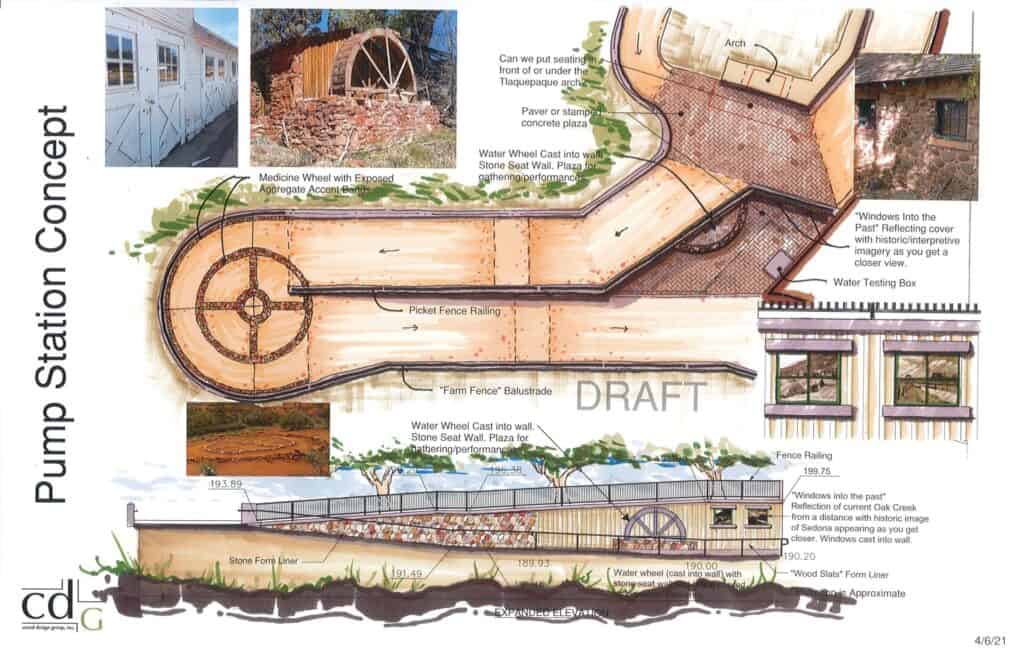The Sedona City Council unanimously approved a contract with J. Banicki Construction to build the long-awaited pedestrian underpass at Tlaquepaque at its meeting on Tuesday, April 11.
Banicki bid $3,461,567.15 to win the contract, the lowest of the three bids the city received. Meridian Engineering of Tucson bid $4,569,412 and Standard Construction of Avondale bid $5,922,708.
“We’re fairly confident in the bid we received from Banicki,” city Associate Engineer Bob Welch told the council. “It was above the engineers’ opinion of cost but, considering the current climate out there in the construction industry … we feel it is a good bid.”
When the underpass was proposed in the city’s 2018 Transportation Master Plan, its cost was estimated at $2 million.
The Federal Highway Administration estimates the cost of pedestrian bridges at between $150 and $250 per square foot. On that basis, a 130-foot-long, 8-foot-wide pedestrian bridge over State Route 179 could cost between $156,000 and $260,000.
City staff were unable to provide a cost and profit breakdown for the contract, but Welch stated that the contractor’s profit “generally is around 25%.”
“This underpass project is more complicated than a standard sidewalk,” Welch claimed when explaining why the city’s public works department is not building the sidewalk. “The work will require heavy/special equipment and resources that the Sedona Public Works team does not have.”
Council approved the contract unanimously, although several members expressed their discomfort with the cost.
“I hate the $3½ million price tag,” Councilman Brian Fultz said, but concurred with Councilwomen Jessica Williamson and Melissa Dunn that getting the underpass built is necessary in order to increase the city’s options for traffic management.
“This is, I think, a good price,” Williamson commented.
Vice Mayor Holli Ploog described herself as being “very conflicted” over the decision. “I wish that we didn’t have to spend $3 million and we could just close the crosswalk. It would be much simpler,” Ploog said.
With a contract approved, the city expects construction to begin early in May and take roughly nine months to complete.

Sedona in Motion
In other Sedona in Motion updates, City Transit Administrator Robert Weber informed council that the trailhead shuttles had recorded 283,952 boardings over 222 days of service during their first year of operation. A round trip to a trailhead and back is two boardings.
Based on these figures, the number of round trips made by each shuttle on each route and the number of seats on each shuttle, the system was operating at 19.3% of capacity. These passengers were primarily tourists.
At 20% capacity, the trailhead shuttle’s vehicle-to-passenger weight ratio, a measure of how much fuel is being burned to move the vehicle rather than the passengers and thus of the vehicle’s efficiency, is 25:1, less efficient than a typical passenger car carrying one person.
Weber also stated that the launch of the city’s planned microtransit service is currently delayed until September or October. In January 2022, the city had predicted that the microtransit service would come online in fall 2022.
Progress on the Forest Road extension project is currently delayed pending utility relocation; city staff now expect construction to resume within the next month for completion in April or May of 2024. As of January of this year, it was scheduled for completion in November 2023.
Final design of the Brewer Road bus station is on hold “pending future decisions regarding transit operations,” Weber added.
The city is still attempting to work out an arrangement with the U.S. Forest Service to implement parking restrictions from the city limits all the way to the end of Dry Creek Road.